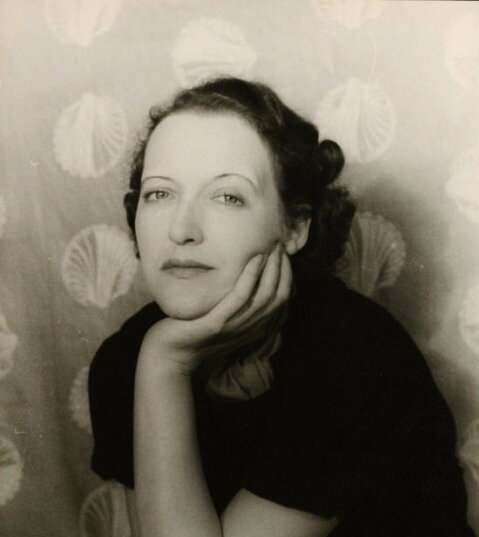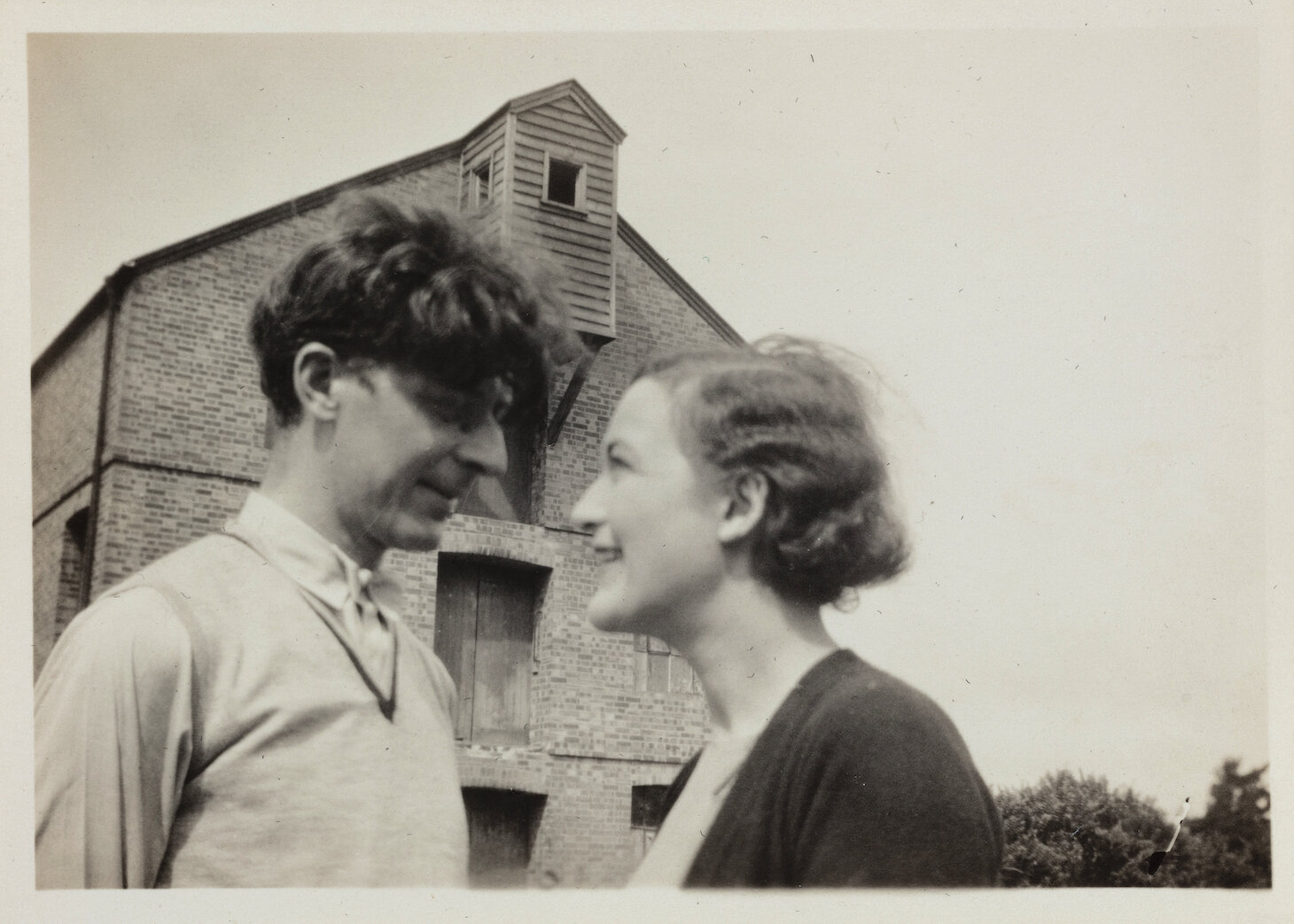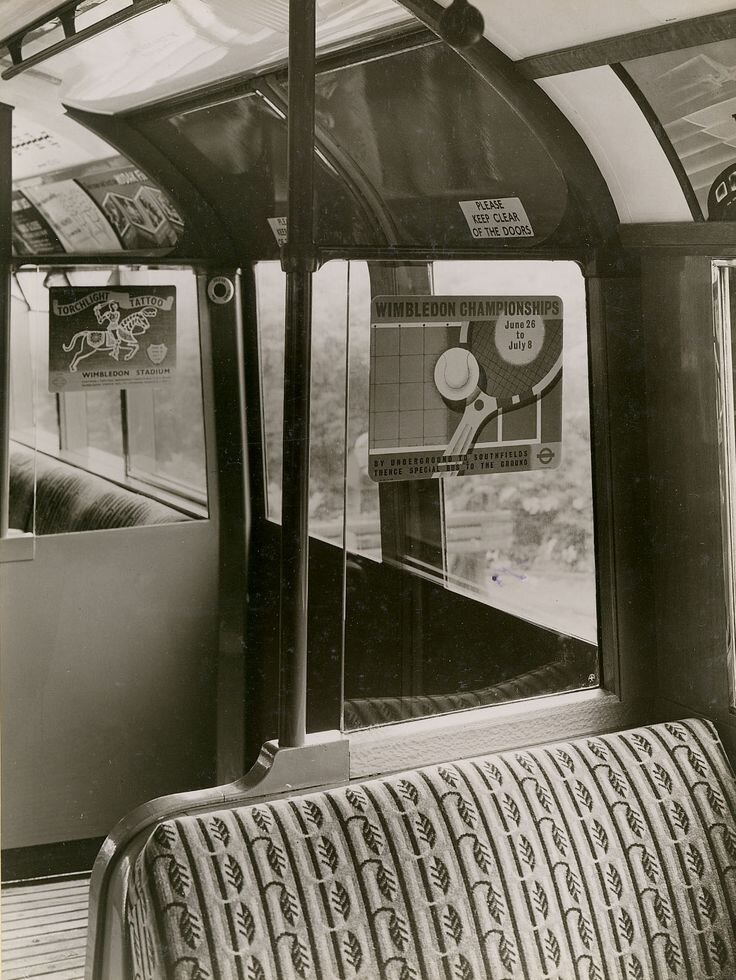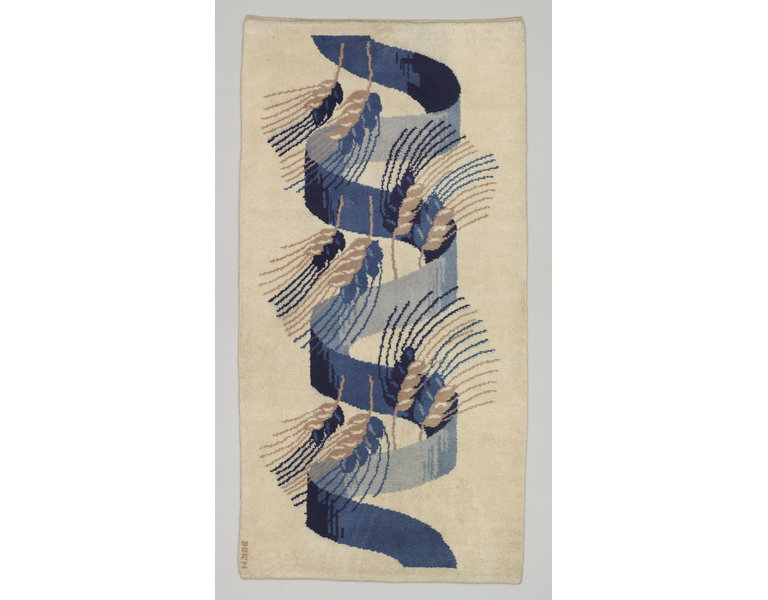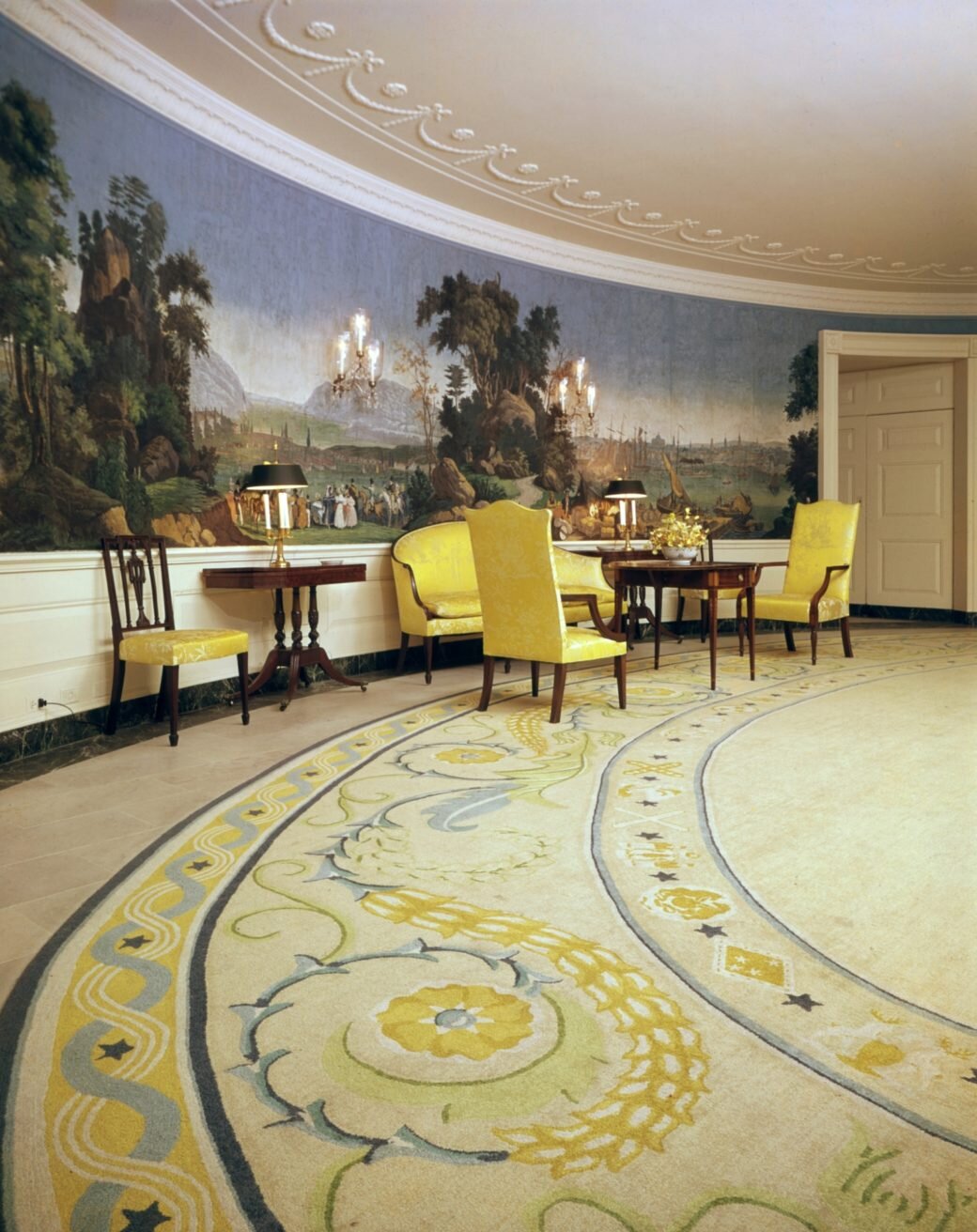MARION DORN
Marion Dorn (1896-1964) was a gifted textile designer, best known for her bold rugs and furnishing fabrics, which epitomised the style of the Industrial Art movement in 1930s Britain. Natural motifs recur in Dorn’s designs - most notably leaves, birds and shells - often composed in an abstract way with a real sense of rhythm (as seen in Avis, below).
Left: Marion Dorn, photographed by Carl Van Vechten, 1936
Right: Marion Dorn and Edward McKnight Kauffer
Marion lived a fascinating life - originally from California, she settled to London in 1923 with her partner, graphic designer Edward McKnight Kauffer, whom she called Ted. This was shortly after a trip to Paris where she met artist Raoul Dufy, who had recently turned his hand to textile design, inspiring Dorn to do the same. She quickly gained recognition in London for her batik hangings, which were shown in Vogue magazine and sold in upscale boutiques. This led to several years as a successful freelance textile designer, creating original furnishing fabrics in collaboration with pioneering companies such as Edinburgh Weavers and Donald Bros. Most notably she designed bold bespoke rugs for luxury hotels and ocean liners, elevating the status of the rug to centrepiece to the modern interior. Dorothy Todd (editor of Vogue at the time) called her the ‘architect of floors’.
Left: 'Avis' furnishing fabric designed for Edinburgh Weavers, c.1939. Image courtesy of V&A.
Right: ‘Colindale’ moquette on London Underground, 1938.
But not all her fabrics were accessible only to the wealthy elite - in 1938 she designed the iconic moquette fabric ‘Colindale’, which was used by Transport for London on the seats of the underground until the 1950s (above).
Sadly, Dorn and Kauffer travelled back the US with the outbreak of war and neither experienced the same success as they had done in 1930s London. But before her retirement in 1960, Marion worked on one final commission - to design the rug for the Diplomatic Reception Room of a little place called the White House (below).
Left: Rug of hand-knotted woollen pile on a jute warp, designed for Wilton Royal Carpet Factory, 1936. Image courtesy of V&A
Right: Rug designed for the White House, c.1960
Rug designed by Dorn, woven at the Wilton Royal Carpet Factory, 1930s


